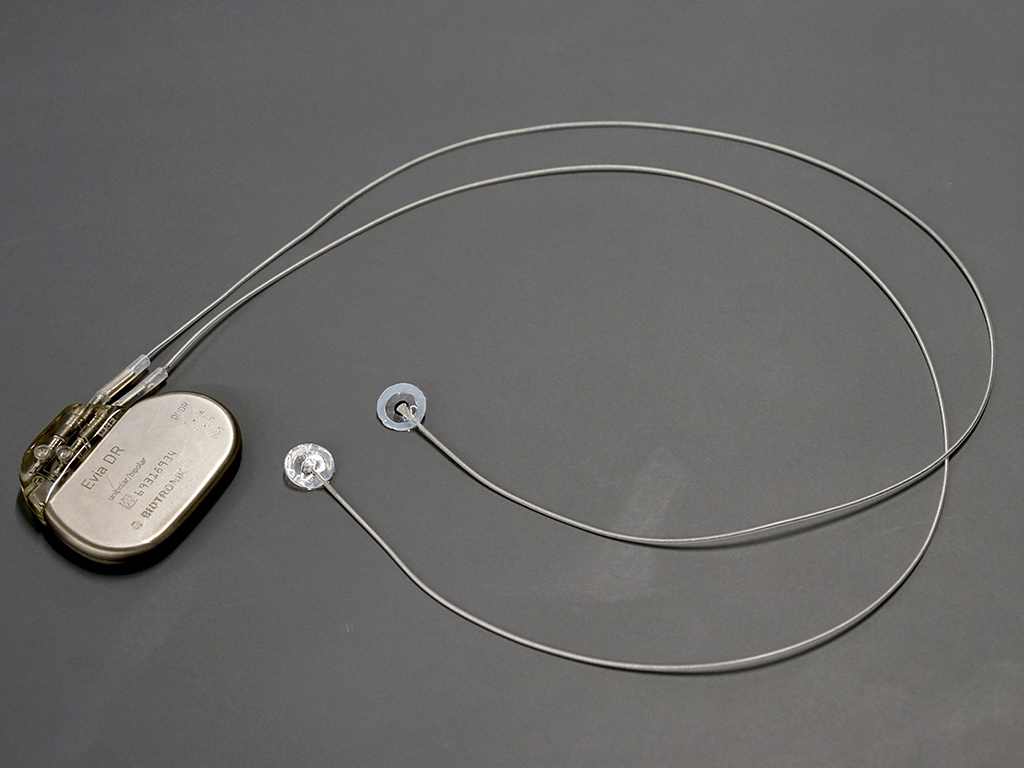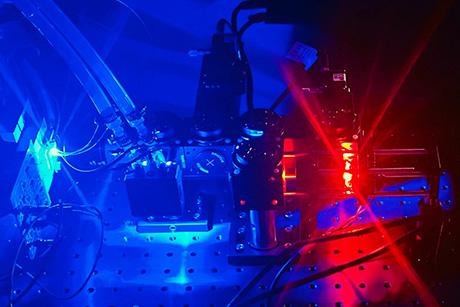Minimally invasive 3D-printable bioadhesive cardiac pacing lead may reduce complications, improve safety for cardiac patients
Detachable bioadhesive temporary cardiac pacing lead offers safer application and removal, along with improved bioelectronic performance
In 2012 at the age of 82, Neil Armstrong, the first man to walk on the moon, died of post-surgery complications following what should have been a routine heart surgery. Armstrong had undergone bypass surgery, the most common open-heart operation in the United States and a surgery where the overall chance of death has dropped to almost zero.
Armstrong’s death was caused by heart damage that occurred during the removal of temporary cardiac pacing leads. Pacing leads are routinely used to monitor and protect patients from the risk of postoperative arrhythmias, including complete blockages, during the recovery period after cardiac surgery. However, because current methods rely on surgical suturing or direct insertion of electrodes to the heart tissue, trauma can occur during implantation and removal, increasing the potential for damage, bleeding, and device failure.
 A minimally-invasive, detachable bioadhesive temporary cardiac pacing lead developed by researchers in the lab of Professor Xuanhe Zhao offers safer application and removal options, along with improved bioelectronic performance. (Image: Courtesy of the researchers.)
A minimally-invasive, detachable bioadhesive temporary cardiac pacing lead developed by researchers in the lab of Professor Xuanhe Zhao offers safer application and removal options, along with improved bioelectronic performance. (Image: Courtesy of the researchers.) A coffee chat in 2019 about Armstrong’s untimely death helped inspire new research, published this week in the journal Science Translational Medicine. The research demonstrates findings that may offer a promising new platform for adhesive bioelectronic devices for cardiac monitoring, diagnosis and treatment, and offer inspiration for the future development of bioadhesive electronics.
“While discussing the story, our team had a eureka moment that we probably could do something to prevent such complications by realizing a completely atraumatic version of it based on our bioadhesive technologies,” said Hyunwoo Yuk SM ’16, PhD ’21, a former MIT research scientist who is now the chief technology officer at SanaHeal. “It was such an exciting idea and the rest was just making it happen.”
The team, comprising researchers affiliated with the lab of Xuanhe Zhao, professor of mechanical engineering and of civil and environmental engineering, has introduced a 3D-printable bioadhesive pacing lead that can directly interface with cardiac tissue, supporting minimally invasive adhesive implantation and providing a detachment solution that allows for gentle removal. Yuk and Zhao are the corresponding authors of the study, former MIT researcher Jue Deng is the paper’s first author.
“This work introduces the first on-demand detachable bioadhesive version of temporary cardiac pacing lead that offers atraumatic application and removal of the device with enhanced safety while offering improved bioelectronic performance,” says Zhao.
The development of the bioadhesive pacing lead is a combination of technologies that the team has developed over the last several years in the field of bioadhesive, bioelectronics, and 3D printing. SanaHeal, a company born from the team’s ongoing work, is commercializing bioadhesive technologies for various clinical applications.
“We hope that our ongoing effort on commercialization of our bioadhesive technology might help faster clinical translation of our bioadhesive pacing lead as well,” says Yuk.

